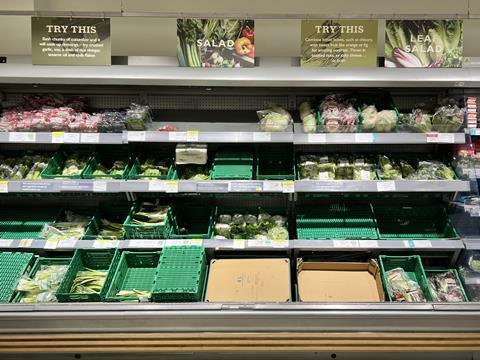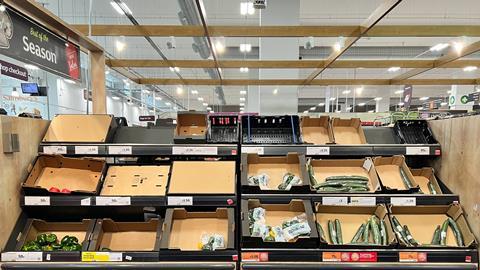UK retail buyers are renowned for staying cool as a cucumber to guarantee supply. But in the past few weeks, the reliability of their sourcing programmes has been called into question
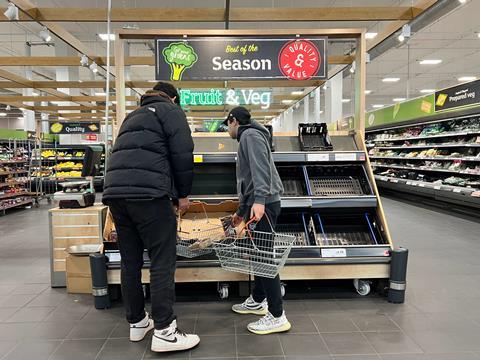
Should retailers spend a penny or two more so they don’t get caught short? That question has dominated discussions in the European fresh produce business over the past month or so, even before the Fresh Produce Journal’s editor Fred Searle broke the news of a major tomato shortage in the UK.
From late February into early March, the UK supermarkets experienced widespread and unprecedented gaps in their salad vegetable supply. The crisis was so widespread, it propelled products including tomatoes, cucumbers and peppers to the top of the mainstream news agenda. As it turned out, it was a story with a shelf-life of at least a fortnight.
And yet, not for the first time, the UK was detached from the rest of Europe, where supermarket shelves remained remarkably well stocked.
What to make of all the drama? For some it’s the latest confirmation that something is rotten in the state of the UK’s food retail system, or what Leon restaurant chain founder Henry Dimbleby labels its “weird supermarket culture”.
For others, this was simply an unfortunately perfect storm of bad luck, the weather, and economic headwinds like the Russia-Ukraine war’s effect on energy prices. Concerns about climate change and Brexit own goals were also raised.
What is certainly correct is that high energy prices back in the autumn left growers across the UK and northern Europe with no choice but to cancel production. It is also a fact that poor weather in the Mediterranean meant the supermarkets’ only remaining procurement plan was a washout.
The lack of contingency and indeed domestic supply does seem to expose cracks in a system long admired for its strong foundations, a major structural weakness in the UK’s homegrown horticultural edifice. Some subsidence, we might agree, in its subsistence.
This raises legitimate questions about how British supermarkets approach the market. Many in the trade are critical of their ultra-low price model, although one or two suggest that some suppliers left their UK customers bereft when they broke contractual agreements to chase better returns in a short market elsewhere.
It also highlights the country’s reliance on imports. New technologies and renewable energy, combined perhaps with a little more government support, might provide some answers as far as bolstering domestic supply.
Either way, the country evidently needs to secure and expand its own supply base. That task surely begins at home.
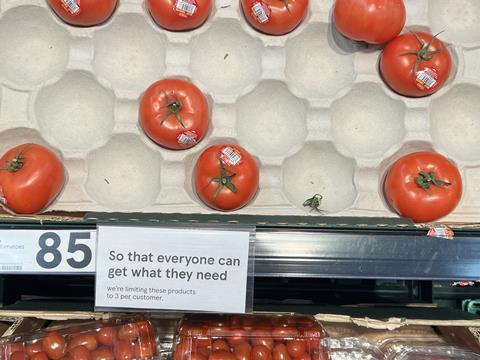
The elephant in the buying room
Over the fifty years that our European title Eurofruit has covered this business, the UK’s retail fresh produce buyers have come to be regarded with a kind of bemused admiration by their counterparts in the rest of Europe. They are seen as tough negotiators with two big advantages.
One, the scale of their employers’ market share in a sizeable market, backed by extensive distribution networks – all but a few per cent of the British grocery market belongs to just ten companies. That gives them immense buying power.
The other advantage is access to highly detailed consumer purchasing data. This enables them to merchandise produce in a much more informed way, to manage and programme each category using accurate demand forecasts.
It’s not all admiration, of course. Some suppliers hate them with a passion, an assessment that stems from a sometimes accurate assumption that buyers are under strict instruction to source everything for less than the supplier wants to be paid. That reputation endures, but there is plenty of respect too, especially among suppliers who meet them close enough to halfway and tap into the UK’s success as a market.
On permanent special offer to those willing ‘sourcing partners’ are long-term seasonal and annual sourcing contracts, all at fixed prices.
It’s a phenomenon rarely seen in continental Europe – aside from products like bananas, pineapple and ginger where the supply is sufficiently stable and predictable throughout the year. In the UK, this approach makes sense. But only up to a point.
“There are countries like Italy and Spain which have a strong domestic production footprint,” says Giancarlo Amitrano, head of fruit and veg sourcing at Rome-based retailer Cedigros. “For retailers who ply their trade in these countries, working at fixed prices over long periods would probably be counterproductive from a commercial point of view. That’s because market prices for fruit and vegetables vary almost every day.”
Trouble is, in February-March, the UK’s fixed-price model failed to guarantee the volume required.
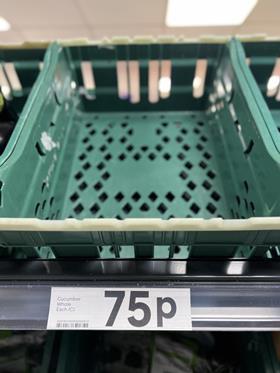
Are the salad days over?
Which brings us to the question of expectations. Should the UK be able to supply itself with those products throughout the winter? Or should it rely on imports? Or not bother at all? With the cost of energy so high, does the government have a responsibility to support UK production? Or is it down to the retailers (and consumers) to pay more?
Right now, the gaps have started to refill, but the prospect of better availability in northern Europe remains very uncertain. Many UK growers are still in two minds whether to plant crops for harvest in mid-April and beyond. So British supply will not return until after Easter at the earliest.
Don’t forget, retail buyers elsewhere in Europe have also had to contend with more limited sourcing options. German retailers knew back in the autumn that tomatoes would be more expensive if they locked in deals with the Dutch and Belgians, so they relaxed their requirements on variety and provenance and went to countries like Turkey to make up the shortfall.
In the UK, some of those we spoke to in the past few weeks point to a certain fussiness among UK retail buyers when it comes to the products they demand. Their vine tomato offer, for example, is built largely on a variety called Piccolo, and there was apparently little interest in a switch to alternative types.
Many also feel the UK supermarkets are overly dependent on too few sources, that they need to find ways to obtain produce from elsewhere, and must pay more for what they procure.
Brexit is not seen as a major factor this time, but problems with labour and customs red tape could make the UK less competitive as a market in future.
It will be interesting to see what happens next. Poor weather continues to limit supplies of other products – Mediterranean clementines, Peruvian mangoes, and New Zealand apples to name three latest examples.
As one major supplier put it: ”Weather has forever been a challenge for fresh produce, but the difference now is that there is not the speculative planting. So the risk of shortages become greater, and weather patterns are even more unpredictable.”
If that’s true, then retailers who bargain hard but fail to secure enough loyalty points with their suppliers will almost certainly find themselves back out in the cold.
